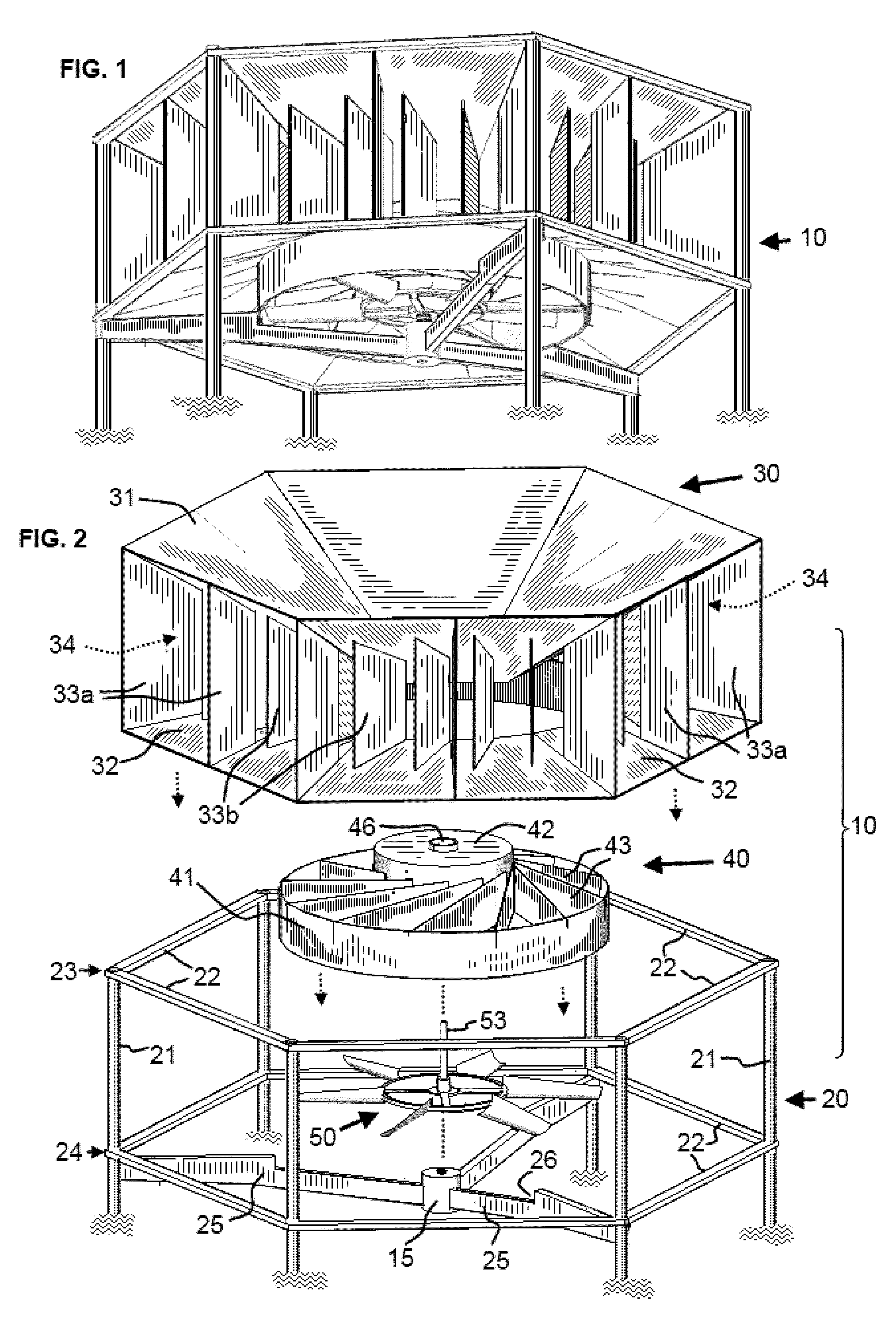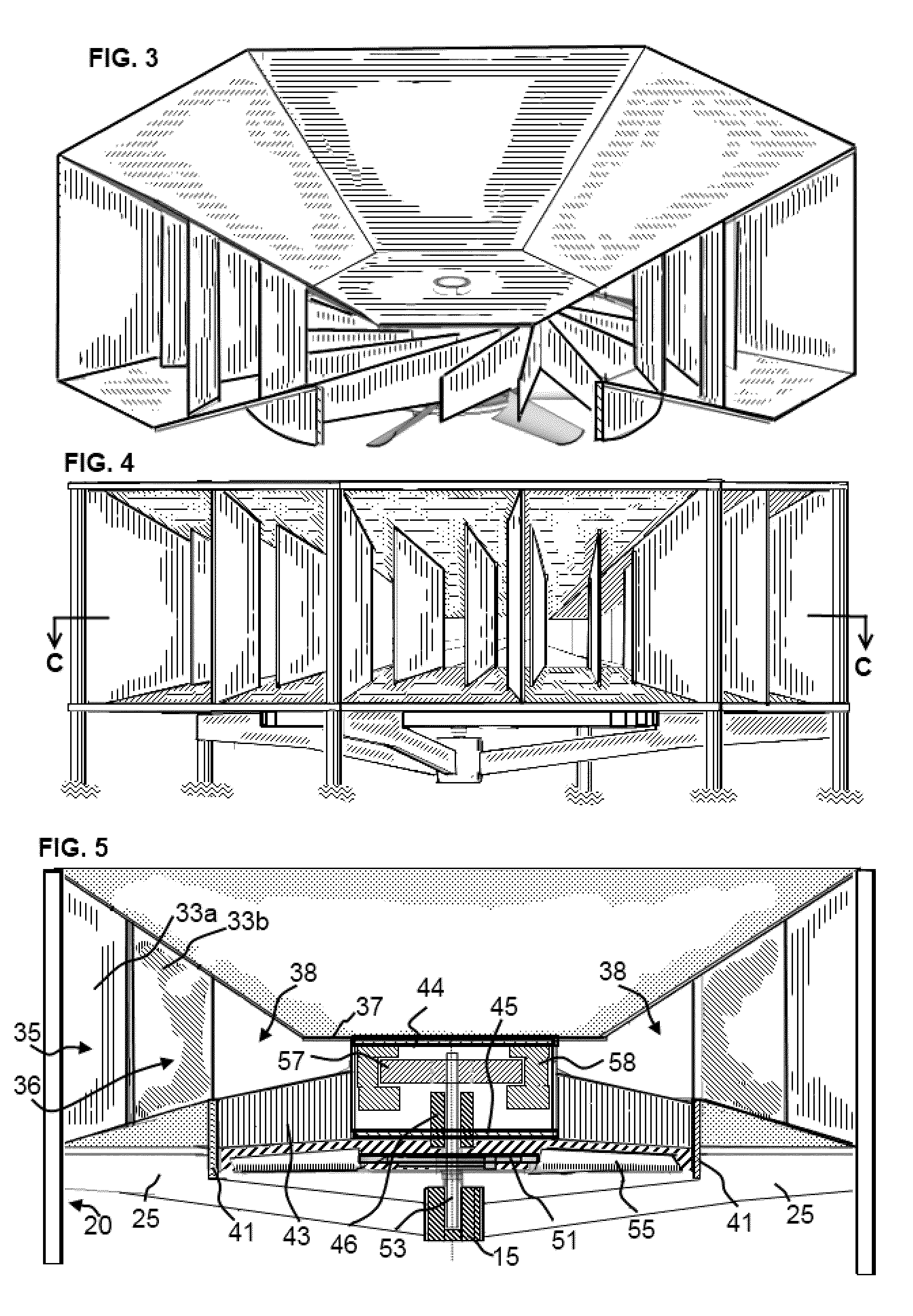Vertical axis wind turbine with axial flow rotor
a technology of axial flow and wind turbine, which is applied in the direction of motors, climate sustainability, sustainable buildings, etc., can solve the problems of increasing urgency, and affecting the power supply of wind turbines. achieve the effect of optimizing power extraction
- Summary
- Abstract
- Description
- Claims
- Application Information
AI Technical Summary
Benefits of technology
Problems solved by technology
Method used
Image
Examples
embodiment 10
[0052]In the drawings, FIG. 1 through FIG. 5 illustrate an embodiment 10 of the vertical axis turbine of this invention, in which air flows through the turbine rotor in a downwardly direction and is expelled at the base.
[0053]FIG. 2 illustrates embodiment 10 in an exploded view for greater clarity. The vertical axis turbine is mounted within a tower structure 20 for placement on or above a surface such as a field or building rooftop. A collector assembly 30 intercepts and captures wind flowing across the outer facade of the turbine. A stator assembly 40 redirects the incoming wind flow vertically, and an axial flow turbine rotor 50 intercepts the vertical airflow to rotate the rotor.
[0054]Tower Structure
[0055]Vertical frame members 21, which may be steel posts or other suitable structural components, are interconnected by means of horizontally aligned struts 22, to form a rigid tower structure 20 to be anchored on some surface, for supporting the turbine assembly. The vertical frame...
embodiment 11
[0084]In embodiment 11 the collector assembly 30A intercepts and captures wind flow blowing across the outer sides of the turbine, the stator assembly 40A redirects the incoming wind flow upwardly, and an axial flow turbine rotor 50A intercepts the upward airflow to rotate the rotor.
[0085]Operation
[0086]The operation of the turbine may be described with reference to FIGS. 6, 7, 8, 9, 10, 11A, 11B, 11C, and 110 which illustrate various operational features schematically.
[0087]In reference to FIG. 6, 7, 8 and FIG. 10, ambient wind, illustrated by directional arrows 73, flowing in the direction of the turbine is intercepted or “captured” by the collector passages 35 positioned facing wind direction. Airflow is directed inwardly by the first set of vertical panel members 33a, and is redirected into a swirling stream on the inlet side of the turbine rotor by the second set of vertical panel members 33b. The second vertical panel members 33b are positioned at angles relative to the radial...
PUM
 Login to View More
Login to View More Abstract
Description
Claims
Application Information
 Login to View More
Login to View More - R&D
- Intellectual Property
- Life Sciences
- Materials
- Tech Scout
- Unparalleled Data Quality
- Higher Quality Content
- 60% Fewer Hallucinations
Browse by: Latest US Patents, China's latest patents, Technical Efficacy Thesaurus, Application Domain, Technology Topic, Popular Technical Reports.
© 2025 PatSnap. All rights reserved.Legal|Privacy policy|Modern Slavery Act Transparency Statement|Sitemap|About US| Contact US: help@patsnap.com



